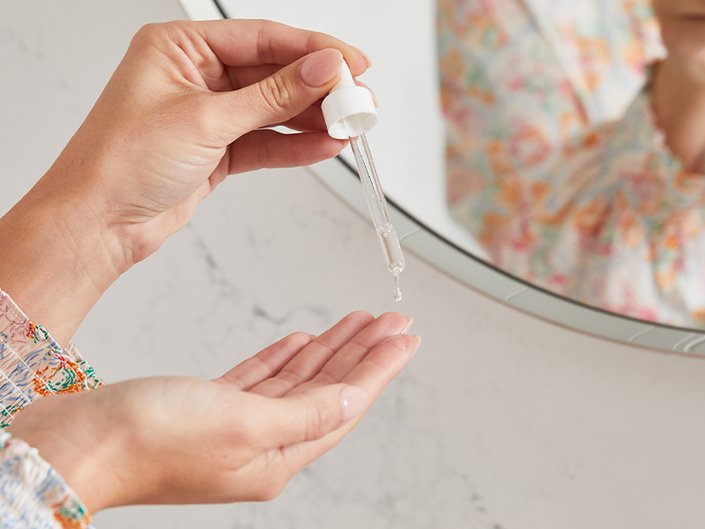There are plenty of skincare ingredients that only lend themselves to specific skin types and concerns — take, for example, salicylic acid, which works best for banishing blemishes and minimizing oiliness; or hyaluronic acid, which aids in hydration. Niacinamide, however, is one of the more versatile ingredients that’s found in many skincare formulas.
Niacinamide can help reduce the look of redness, brighten skin, support the moisture barrier and regulate sebum production, among other benefits. Below, find out more about what niacinamide is, how to use the ingredient and our editors’ go-to niacinamide serums.
What Is Niacinamide?
Niacinamide, also known as nicotinamide, is a form of vitamin B3. It can be used as a main ingredient in certain products or in combination with other ingredients to help calm the skin and improve tolerability.
Skincare Benefits of Niacinamide
Since niacinamide is a form of vitamin B3, it acts as an antioxidant, which helps to neutralize free radical damage and protect your skin from environmental stressors. The ingredient also has brightening benefits, which will help your skin appear more even in tone. Niacinamide can help with hyperpigmentation by impeding the transfer of pigment molecules to the skin cells.
Niacinamide is also a great ingredient for those with oily skin. For those people with oily, acne-prone skin it can help regulate sebum production and reduce acne breakout. The regulation of sebum production can also theoretically help minimize pores.
That doesn’t mean that those with dry skin should skip niacinamide, though. Compared to benzoyl peroxide, salicylic acid or retinoids, topical niacinamide is less irritating. This makes niacinamide a great choice for those with sensitive or dry skin. Not only that, it also helps to calm redness and support the skin’s moisture barrier.
How to Use Niacinamide in Your Skincare Routine
You can mostly find niacinamide in moisturizers and serums. Those with dry skin should look for niacinamide products that also contain gentle, hydrating ingredients, such as ceramides and hyaluronic acid. Those whose skin is on the oilier side may look for niacinamide products that also incorporate breakout- and sebum-minimizing ingredients, like AHAs and BHAs. Meanwhile, if your primary concerns are dark spots and hyperpigmentation, you should look for products that combine niacinamide with other antioxidants, such as vitamin C and ferulic acid. A board-certified dermatologist can help you determine the best way to add the ingredient into your skincare routine.
When to Use Niacinamide in Your Skincare Routine
Niacinamide can be used morning or night, depending on the product you choose. Always read the package instructions before you apply any skincare product, and consult a board-certified dermatologist if you have questions about adding niacinamide to your routine.
Post time: Jun-05-2024
